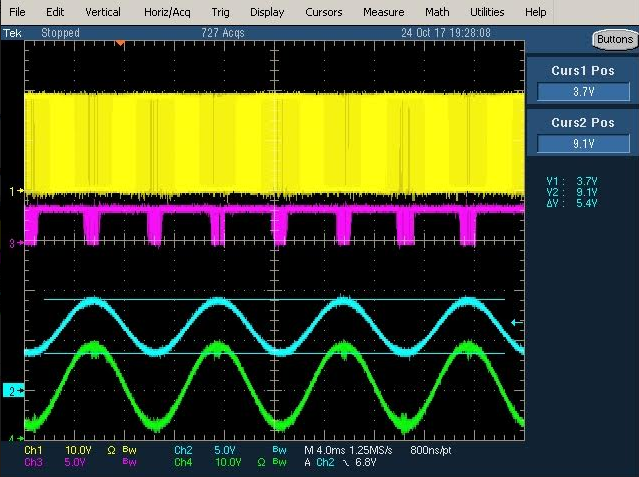Other Parts Discussed in Thread: TAS5086
Hi,
The clipping behavior described in '9.4.2 Signal Clipping and Pulse Injector' occurs at 83 % output level of PVDD×2 in our customer's TPA3245/PFFB board.
TPA3245/PFFB total gain : 10.2 dB.
PVDD: 21V.
Input level (starting clipping behavior) : 5.4×2 Vp-p
21V×2/(5.4×2Vp-p ×10^(10.2/20))×100 = 83.2%
Our customer thinks it is too early to start the clipping behavior.
Is our customer's TPA3245/PFFB operating correctly?
Does PFFB affect starting voltage level of clipping behavior?
Best regards,
Akio Ito



